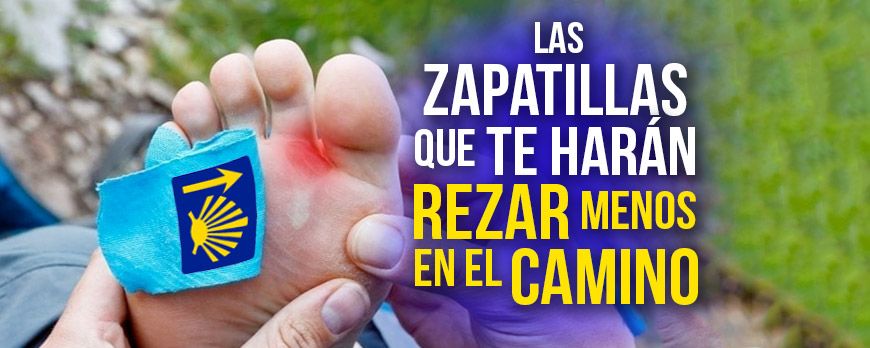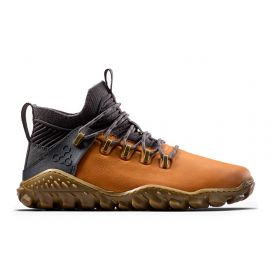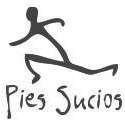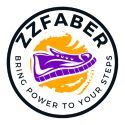No products
Prices are Management included

The Shoes that Will Make You Pray Less on the Camino de Santiago
Doing the Camino de Santiago is an experience that stays with you forever.
It is that mixture of personal challenge, alternative tourism and, for some, even spiritual quest.
But do you know what usually happens?
That many who finish it arrive with their feet a mess, full of blisters, as if they had danced barefoot flamenco on coals.
I told you what happened to Rubén and Vanessa (here and here), but Carlos's story takes the cake. His story is more like a survival mission than a transcendental journey.
He set off on his adventure from Cordoba on a sunny 13th March, wearing Merrell Trail Glove 7s in the firm belief that he had found the holy grail for his feet, but I'll be honest, they had less kilometres on them than a showroom car.
And Carlos was happy with his Merrell; in fact, the Trail Gloves are a marvel of a shoe: roomy enough to make your feet feel like they're in a suite rather than a shared hostel, and with enough protection to allow you to cross cactus fields without batting an eyelid.
The problem was not with the shoes, which are more than enough for many battles, but that our friend's feet were so used to "office hiking" that any challenge became an odyssey, and reality soon set in.
After three days, a blister on the sole of his right foot and after six days on the left.
The swelling, a result of the long days of walking, also took a heavy toll: both big toenails ruined and a total of twelve blisters between the two feet.
Carlos faced an uncomfortable truth: neither his shoes, nor his feet, were up to the task. The Mozarabic Way, with its relentless combination of tarmac, stone paths and gravel, demanded more than his feet could offer.
The situation came to a head in Plasencia, where, after a visit to the emergency room for shredded soles, Carlos switched from the Merrell to the Terrex for maximum protection. While these new boots healed his soles, they introduced a new problem: their tightness and stiffness shredded the little toes on both feet.
Carlos' odyssey continued in Zamora, where he was finally forced to stop for a few days due to a toe infection and to find new footwear.
In short, he had to make more technical stops than a Formula 1 car in Monaco.
This tale of horrors is not to tell you about Carlos' hardships. No way.
It's for you to burn these two vital lessons into your heart before you embark on your own journey:
Your feet need to be ready for the challenge.
If the longest walk you've done lately is from the couch to the fridge, girlfriend, we've got work to do. The long distances of the Camino de Santiago are unforgiving, and feet unaccustomed to intense activity are the perfect recipe for disaster.
Footwear choice is sacred.
It doesn't matter how much you love those narrow, stiff trainers you wear to the office or out and about. On the trail, you need allies for your feet: wide, flexible shoes with the right sole thickness for the condition of your feet and the terrain you'll encounter.
That's why.
If you're going to do the Camino, do it right. Don't skimp on what you wear on your feet, because you're going to spend more time with your shoes than with your shadow.
And if it happens to you like Carlos, Rubén or Vanessa, all is not lost. The Vivobarefoot Magna Forest ESC is your ace up your sleeve.
These shoes are not the typical shoes that the corner shop sells you as "ideal for everything". No, my friend. They're designed so that instead of cursing every stone along the way, you can concentrate on enjoying the experience and, who knows, even finding yourself along the way.
Imagine a shoe that hugs your foot like it's your grandmother (but without the cheek pinching) and protects you from treacherous rocks without making you feel like you're wearing leads in your feet.
That's the Magna Forest ESC.
Its Michelin sole defends you from the elements while allowing you to feel where you're stepping, almost as if you can read Braille with your feet. And yes, they're so roomy that your feet will have room to spread out after a long day, avoiding that dreaded St. Vitus dance your toes tend to do when they're too tight.
And no, this isn't selling for the sake of selling.
It's because when you go home, it's the story you tell that matters. And I assure you that you will prefer to tell how you found yourself, not how many blisters were waiting for you at the end of the day.
Don't say I didn't tell you.
Health starts with your feet.
Antonio Caballo.
Podsdata: Come on, you're just one step away from turning that journey into a legend.
And you know, if you finally find the meaning of life along the way, give me a call.
Dejar un ComentarioDejar una respuesta
Blog categories
- Running Technique
- Shoes Review
- Scientific studies
- Nike and minimalist shoes
- Morton neuroma
- Bunions
- Podiatrists' opinion on...
- Claw toes, crowded toes,...
- Flat feet
- Runner's injuries, runner's...
- Sprained feet, ankle sprains
- Footwear for wide feet or...
- Heel and back pain
- Children's feet and...
- Circulation and bone...
- Knee pain, osteoarthritis,...
- Plantar fasciitis
Últimos Comentarios
Antonio Caballo
Do podiatrists who criticize barefoot footwear...Fernando Capellán
Do podiatrists who criticize barefoot footwear...Fernando Capellán
That Vivobarefoot lawsuit… and what happened nextLorena Cortés
This is what Nike did to Nadal's foot











































1 Comentario
Erik Cuellar 04/15/2024
Hola buen día, creo que hay algún dato más fundamental:1. El calcetín: para largas caminatas y terrenos variados, si siempre usas calzado, cuanto más gordo sea el calcetín mejor, en invierno y en verano. Indiferentemente de tu actividad habitual. Si andas descalzo por cualquier terreno, el calcetín es indiferente obviamente.
2. La talla: si vas ha hacer largas caminatas, si vas a ha hacer varias jornadas seguidas, o si vas a usar un calcetín gordito, o no. La talla tiene que ser suficientemente holgada para que pueda dar cabida a las pantallas que uses, al calcetín y a todo el volumen que van a coger tus pies a lo largo de la jornada o de las jornadas, independientemente del calzado que uses, minimalista o no.
¡Buenas caminatas! ????